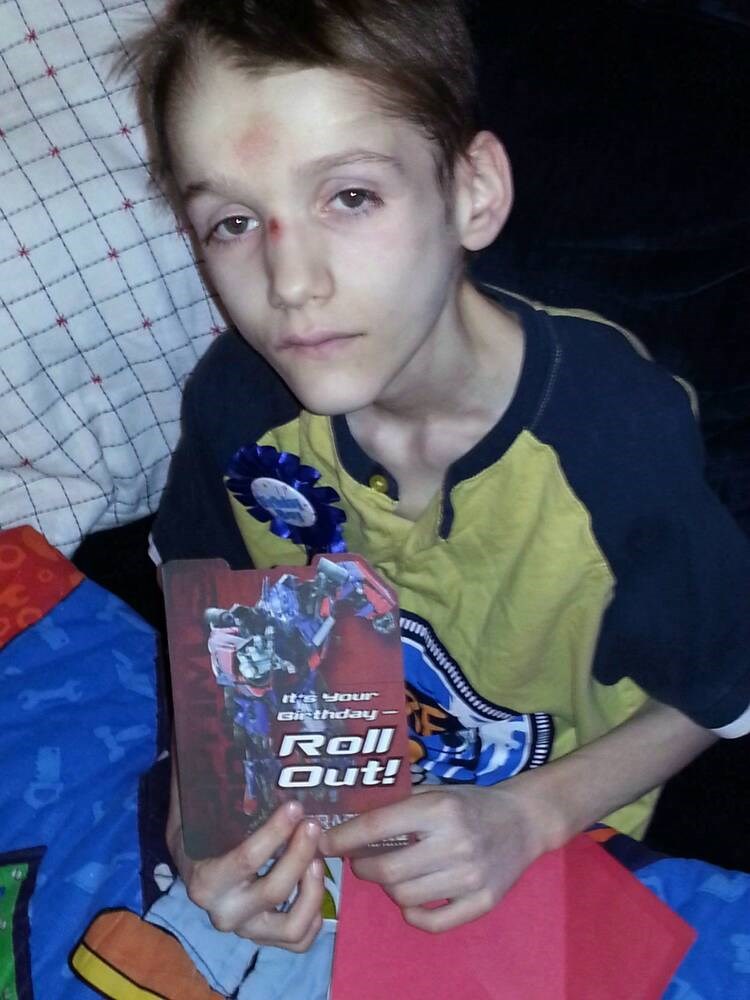B.C. has a protocol for interprovincial information sharing when an at-risk child moves out of the province, but B.C.’s child representative said that cross-border sharing didn’t happen in the case of a 15-year-old boy who died of neglect in Alberta.
That’s because the Ministry of Children and Family Development closed his file despite concerns for the child from B.C. doctors.
Jennifer Charlesworth, B.C.’s Representative for Children and Youth, was responding to a fatality inquiry report released this week by a judge in Alberta.
It recommended an alert information-sharing system between provinces for high-risk children. Justice Sharon Van de Veen made the recommendation after examining the case of Alexandru Radita, who died of neglect in Calgary even though B.C. officials had been aware he was in danger.
Alex weighed 37 pounds and was severely malnourished when, in May 2013, he was taken to hospital where he died from sepsis and untreated diabetes. His parents, Emil and Rodica Radita, were found guilty in 2017 of first-degree murder.
Van de Veen found that standardized cross-boundary communication could have saved Alex’s life and could prevent similar deaths in the future.
Doctors at B.C. Children’s Hospital played a pivotal role in flagging concerns about lack of treatment for Alex’s diabetes. Court heard his parents refused to accept he had the disease after he was diagnosed in 2000.
He was hospitalized twice in B.C. due to malnutrition and taken into foster care, but later returned to his parents.
The family moved to Alberta in 2008. The boy’s case file in B.C. had been closed, so child welfare officials in Alberta were unaware that he was potentially in danger.
Charlesworth said given the many warning signs about Alex’s well-being, the ministry tried to bring him back into care through a continuing custody order. However, that request was turned down by a B.C. judge. As a result, Alex was not in care and the ministry closed his file.
“I think it was regrettable that (his file) was closed,” Charlesworth said. “If it was open, then … there are provisions for interprovincial sharing of information when there are concerns.”
Grace Lore, B.C.’s minister for children and family development, called Alex’s death “absolutely horrifying” and said there have been a number of changes since 2013.
B.C. now has a provincial-territorial protocol that includes “child action alerts,” she said. That means front-line workers in B.C. are required to gather and disclose information any time there’s concerns about the safety and well-being of a child who has moved outside of B.C.
“When we know a child has moved out of B.C., front-line workers are required to share that information and they’re required to do so verbally, not just in an email,” Lore said. The province also has an interprovincial coordinator whose job it is to ensure that communication is taking place, she said.
Lore acknowledged there are “significant challenges when we have concerns about a child, but a child is not in our care or under a supervision order.”
That’s why she said her ministry will be studying the Alberta fatality report to see if there are gaps that can be filled to ensure children are kept safe.
Charlesworth said many of the improvements in interprovincial information sharing followed a report she wrote in 2019 called Caught in the Middle which examined the overdose death of a teen who had been in contact with child-welfare systems in B.C. and Alberta.
The teen moved to B.C. when he was 13, after child protection officers in Alberta placed him with a relative. However, Alberta didn’t follow an existing protocol between the provinces that required it to notify B.C. social workers of that arrangement.
“One of the things we identified there was how important it was that there be some really good planning with respect to interprovincial co-ordination,” Charlesworth said.
She said all other jurisdictions in Canada need to be on board with sharing crucial child welfare information. That’s why she’s calling for the federal-provincial-territorial working group, which is comprised of provincial child welfare directors, to revisit their policies and provide an update on whether interprovincial communication is actually working.
Meanwhile, a Victoria pediatrician is raising concerns about how difficult it is to provide information to the ministry about a potentially at-risk child.
In an opinion piece in the Times Colonist published Wednesday, Dr. Jennifer Balfour said in the last month, she’s called the ministry’s child protection phone line three times and had to wait 80 minutes each time to speak to someone. The phone line is for professionals, including doctors, teachers or nurses, to report a concern about a child or youth who is in need of protection.
“I hate to think who gives up and doesn’t report their concern at all,” she wrote. “This phone line wait is emblematic of the disconnection between the ministry system that says they exist to protect children from harm, and the system that exists. Does it reflect a huge volume of calls, or being too short staffed for the need? Either way, it’s horrifying.”
In one example, Balfour said nobody at the ministry seemed to know that a young child hadn’t been at school for three months.
“She was unseen by anyone, in the care of an unwell adult, and it took almost an hour and a half to get through to highlight how very, very concerning this is.”
Lore said she read Balfour’s letter and shared her concerns about lengthy waiting times.
“This is not OK,” she said. “We rely on the adults in community, whether they’re doctors or teachers, or community members — and we’re talking about children’s safety, wellness, protection — and when they have concerns, they need to be able to get them to us.
On the child protection line, there’s an option to classify a case as urgent, Lore said. Those calls are answered within five minutes.
— With files from The Canadian Press



